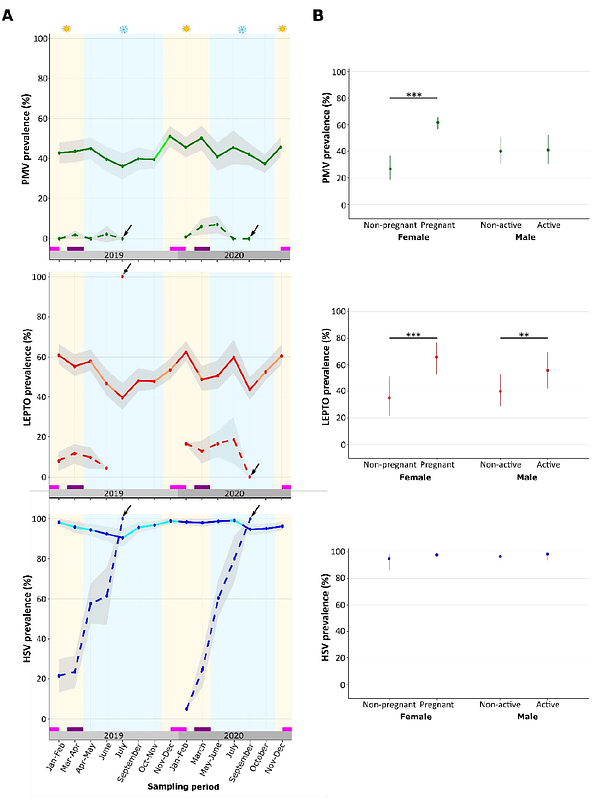Role of individual and population heterogeneity in shaping dynamics of multi-pathogen excretion in an island endemic bat

Role of individual and population heterogeneity in shaping dynamics of multi-pathogen excretion in an island endemic bat
Aguillon, S.; Turpin, M.; Le Minter, G.; Lebarbenchon, C.; Hoarau, A. O. G.; Toty, C.; Duchet, A.; Joffrin, L.; Ramanantsalama, R. V.; Tortosa, P.; Mavingui, P.; Dietrich, M.
AbstractUnderstanding processes driving pathogen transmission in bats is critical to prevent spillovers and emergence events. However, it requires fine-scale ecological investigations, which are rare because of the complexity and heterogeneity of bat populations. Here, based on the monitoring of 5,949 Reunion free-tailed bats (Mormopterus francoismoutoui) in 17 roosts over 24 months, we studied the simultaneous excretion of paramyxovirus and Leptospira bacteria in urine, and herpesvirus in saliva. We analysed the influence of individual and roost-level factors on co-excretion dynamics. We evidenced all year long excretion with high prevalence (37% - 87%), with low levels of temporal synchrony among roosts and no signal of density-dependent transmission. Recapture data support persistent infections for all infectious agents, alongside with clearance followed by reinfection for paramyxovirus and Leptospira. Our results suggest that sex-specific social behaviour or physiological adaptations drive herpesvirus excretion, while paramyxovirus and Leptospira excretion reactivate during reproduction. Our data also suggest the protection of juveniles by maternal antibodies, but different waning dynamics, much shorter for HSV infection, that could lead to a pathogen-dependent role of juveniles in the spread of infection. Interestingly, the excretion of one infectious agent was positively correlated to the excretion of a second one. However, the probability of excreting a third one was reduced for individuals already bi-excreting, suggesting negative interactions for cumulative infections. Connecting such spatio-temporal data with ecosystem alterations in Reunion Island could further contribute to our understanding of the links between human-mediated changes in the ecology of bats and infectious diseases emergence processes.


